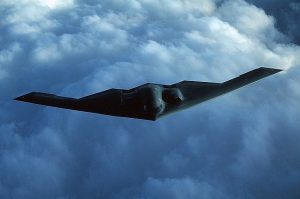
In a groundbreaking development, Northrop Grumman, in collaboration with the US Air Force, has successfully executed an Integrated Airborne Mission Transfer (IAMT) test with the iconic B-2 Spirit stealth bomber. This significant achievement The IAMT component of the B2C3 program represents a pivotal advancement for the B-2 Spirit, enabling it to seamlessly receive and execute new mission instructions while in flight, directly enhancing its agility and responsiveness in dynamic operational scenarios. Nikki Kodama, Vice President and B-2 Program Manager at Northrop Grumman, emphasized the importance of this achievement, stating, "We are providing the B-2 with the capabilities to communicate and operate in advanced battle management systems and the joint all-domain command and control environment, keeping the B-2 ahead of evolving threats." Over the course of two days, the US Air Force-led test executed an impressive 50 mission transfers. The specific B-2 aircraft used for this momentous occasion was the Spirit of Kitty Hawk vehicle 1086, outfitted with Northrop Grumman's Mission Management Device (MMD) design. The successful integration of digital software with the B-2's weapon system represents a significant leap forward in terms of connectivity and survivability, particularly in highly contested environments. This achievement is part of a broader modernization effort aimed at ensuring the B-2 remains a potent and adaptable asset for national defense. Central to this achievement is the B-2 Adaptable Communications Suite (ACS), which, when combined with MMD, creates an open mission system architecture. This architecture facilitates the rapid and cost-effective deployment of contemporary mission capabilities, ensuring that the B-2 remains at the cutting edge of technology and operational effectiveness. The test showcased the seamless flow of mission data. The aircrew received incoming mission instructions from the ACS ground station, which were then loaded directly into the B-2's disk drive unit through MMD interfaces. This process significantly streamlines mission execution, allowing B-2 flight crews to focus more on the tactical and strategic aspects of their missions in today's fast-paced and dynamic battlespace. With its enhanced communication capabilities and adaptability, the B-2 Spirit is poised to play a crucial role in the future of national defense.
























